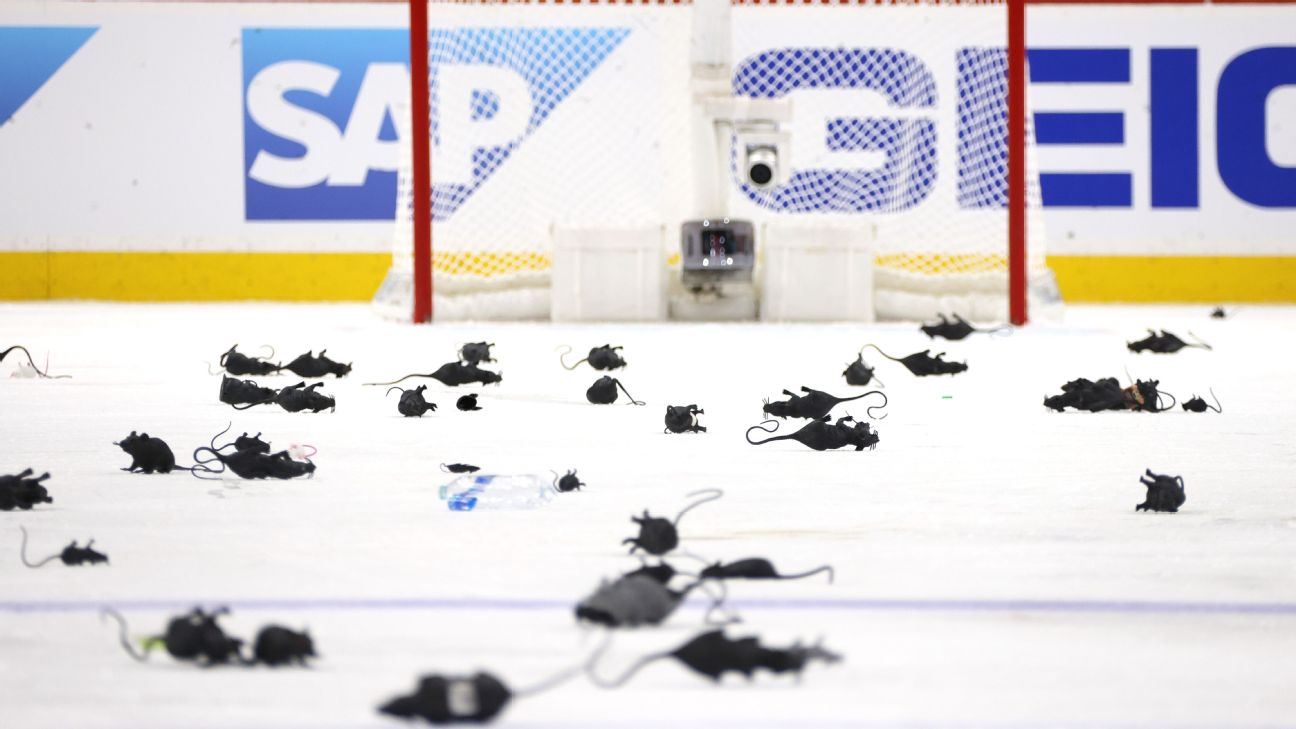
In most cases the phrase “raining rats” would not be construed as a positive.
Unless you’re in south Florida. And specifically at a Florida Panthers game.
Those caveats indicate the appearance of rats — at least the plastic variety — to be an exceptionally good thing. Hockey watchers might have noticed the rodents flying about Florida’s rink during this postseason.
Confused as to why? Allow us to explain.
The Panthers — who are facing the Vegas Golden Knights in the 2023 Stanley Cup Final — have a history with the rat dating back to the franchise’s first Cup Final appearance in 1996. That also happened to be Florida’s inaugural season, when the groundwork was laid for one of the organization’s long-standing traditions: its fans throwing plastic rats on the ice to celebrate goals, of all things.
It began during the opening game of that season when Florida played at Miami Arena. Forward Scott Mellanby had to kill a rat with his stick prior to puck drop that night, then he went out and scored two goals in the Panthers’ 4-3 victory over Calgary. Goaltender John Vanbiesbrouck joked after the game that Mellanby’s accomplishment constituted a “rat trick” and so the season became known as the Year of the Rat.
(Fun fact: 1996 was also the Year of the Rat in the Chinese Zodiac calendar).
Florida’s faithful picked up on the trend and began throwing plastic rats — purchased at gas stations, convenience stores or even at the rink itself — onto the ice after Panthers goals. That continued all the way through Florida’s run to the ’96 Cup Final against Colorado. The Panthers were swept by the Avalanche in that series — souring some of the rat-tossing efficacy at bringing good luck — and then the NHL subsequently banned the act entirely, citing onerous delays required to clear the ice.
Bummer.
Despite the ban, plastic rats have found their way from the stands onto the ice over the years. In 2007, Panthers alumni sold the rats to raise money for the Florida Panthers Foundation. In 2011-12, when Florida made the playoffs for the first time in a decade, rats were back in the rotation (although the team did stop selling them in the arena). During the lean years that followed, Florida tried to keep a spark from the tradition in play, coming up with a secondary mascot named Viktor E. Ratt in 2014.
It’s no great shock, then, that the Panthers’ recent improvements — including three consecutive playoff berths, a Presidents’ Trophy last season and the Cup Final trip this season — have again brought rats back to the forefront. Through thick and thin, the plastic rodents have been part of Florida’s lore.
So the next time you see one in the air, or on the ice, don’t be alarmed. It (more than likely) means something is going well for the home team.
Source link
Why do Florida Panthers fans throw plastic rats on the ice?







